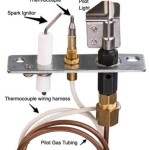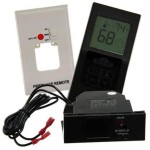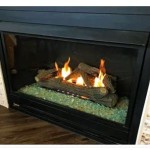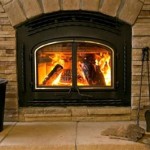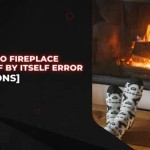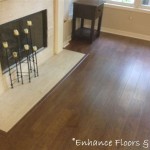Heat N Glo Fireplace Troubleshooting: A Guide to Common Issues and Solutions
Heat N Glo fireplaces are known for their elegance and efficiency, providing both warmth and ambiance to homes. However, like any appliance, they can experience occasional malfunctions. This article will guide you through common Heat N Glo fireplace problems, offering practical troubleshooting tips and solutions. Understanding these issues can empower you to address them effectively, ensuring your fireplace continues to operate smoothly and reliably.
1. No Ignition or Flame: Identifying and Resolving the Issue
A fireplace that fails to ignite or produce a flame can be frustrating. Several factors can contribute to this problem, including:
- Gas Supply Issues: Ensure the gas valve is open and the gas line has adequate pressure. Check for any leaks or blockages in the gas supply.
- Pilot Light Problems: The pilot light may be extinguished or malfunctioning. Examine the pilot light and attempt to relight it following the manufacturer's instructions.
- Faulty Ignition System: The ignition system, which includes the igniter and electrodes, might be defective. Contact a qualified technician for inspection and repair.
- Control Panel Issues: The fireplace's control panel may have a malfunctioning switch or sensor. Investigate the control panel for any visible damage or loose connections.
Troubleshooting Steps:
- Check the gas supply, ensuring the valve is open and the line has adequate pressure. Look for any leaks or blockages.
- Attempt to relight the pilot light according to the manufacturer's instructions.
- Inspect the ignition system components: the igniter and electrodes. If they appear damaged or corroded, contact a technician.
- Examine the control panel for any visible damage or loose connections.
2. Poor Flame Performance: Analyzing and Addressing the Issue
A weak or flickering flame can indicate problems with the fireplace's combustion process. Potential causes include:
- Insufficient Gas Pressure: Low gas pressure can lead to a weak flame. Check the gas valve and line for any obstructions or leaks.
- Dirty or Clogged Burners: Accumulated debris can impede gas flow, resulting in a poor flame. Clean the burners thoroughly.
- Airflow Issues: Inadequate ventilation can disrupt combustion. Ensure the fireplace's air vents and flue are clear of obstructions.
- Faulty Gas Valve: A malfunctioning gas valve may not deliver the correct amount of gas, causing a weak flame. Contact a qualified technician for repair.
Troubleshooting Steps:
- Inspect the gas supply system for any leaks or blockages. Ensure the valve is fully open.
- Clean the burners thoroughly, removing any accumulated dust or debris. Refer to the manufacturer's instructions for proper cleaning techniques.
- Check the fireplace's air vents and flue for obstructions. Ensure adequate airflow.
- Contact a qualified technician if you suspect a faulty gas valve.
3. Excessive Smoke or Soot: Examining and Correcting the Problem
Smoke and soot buildup can be a sign of inefficient combustion or ventilation problems. Potential causes include:
- Flue Obstruction: A blocked flue can trap smoke and cause it to escape into the room. Inspect the flue for any obstructions, such as bird nests, debris, or a build-up of creosote.
- Poor Airflow: Insufficient air supply to the fireplace can result in incomplete combustion and excessive smoke. Ensure that the air vents and intake are clear.
- Dirty Glass Doors: Soot and grime on the glass doors can impede proper airflow and promote smoke build-up. Clean the glass doors regularly.
- Incorrect Gas Pressure: An issue with gas pressure can lead to improper combustion and create smoke. Check the gas valve and line for any leaks or blockages.
Troubleshooting Steps:
- Inspect the flue for any obstructions, using a flashlight or camera to check for debris, bird nests, or creosote buildup. Contact a qualified chimney sweep for cleaning if necessary.
- Ensure that the fireplace's air vents and intake are clear of obstructions. Proper ventilation is crucial for optimal performance.
- Clean the glass doors regularly to prevent soot buildup.
- Check the gas supply system for any leaks or blockages. Ensure the valve is fully open.
Remember, safety should always be your top priority when troubleshooting a fireplace. If you are unsure about any aspect of the troubleshooting process, it's best to call a qualified technician for assistance.

Heat Glo Gas Fireplace Troubleshooting

Heat Glo Gas Fireplace Troubleshooting

Heat Glo Gas Fireplace Troubleshooting

Heat Glo Gas Fireplace Operation

Heat Glo Gas Fireplace Troubleshooting

Heat N Glo Townsend Fireplace Won T Light Doityourself Com Community Forums

Heat N Glo Townsend Fireplace Won T Light Doityourself Com Community Forums

Heat Glo Provident Gas Insert Fireside Hearth Home

Heat Glo Fireplace Turns On And Off Here S What To Do Upgradedhome Com

Relighting Your Heat Glo Standing Pilot Fireplace
Related Posts

